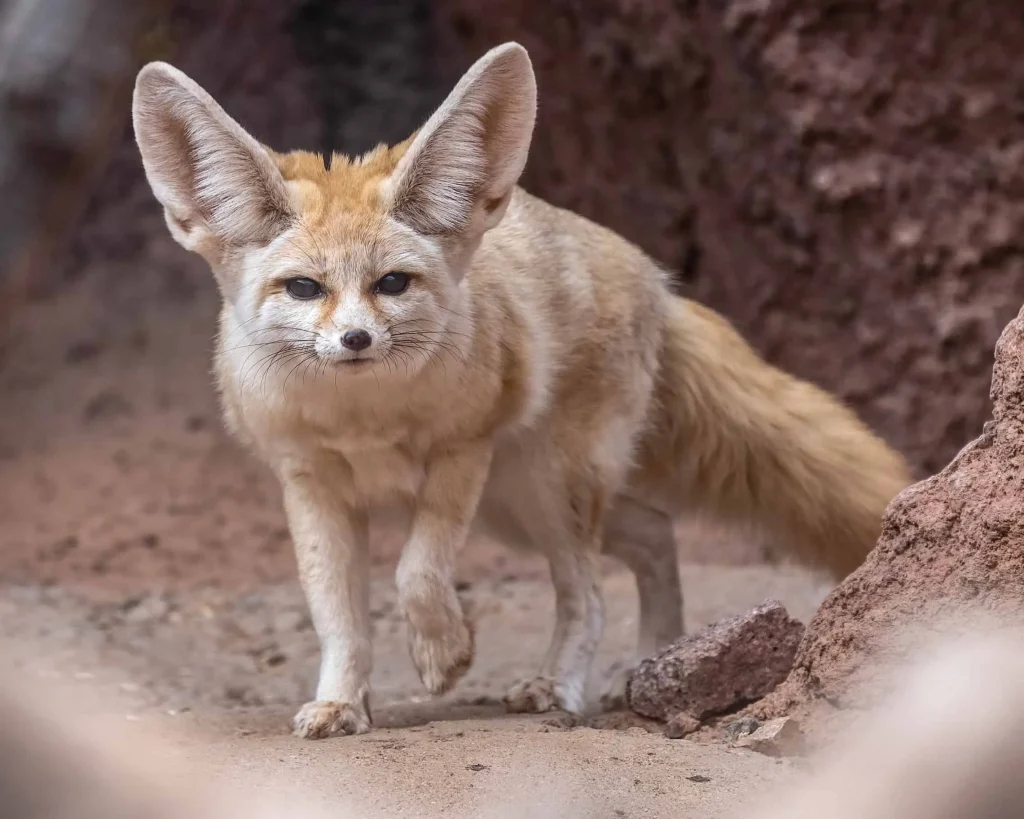The Fennec Fox: A Guide to the World’s Smallest and Most Adorable Desert Fox
The Fennec Fox (Vulpes zerda) is known for its unique appearance, small size, and adaptability to the harsh desert climate. Native to the Sahara Desert and parts of North Africa, this fox species stands out due to its oversized ears and petite body. In this article, we will explore the characteristics, habitat, behavior, and conservation status of the Fennec Fox, while also covering why this fox has become increasingly popular among animal lovers worldwide.

1. What is a Fennec Fox?
The Fennec Fox is the smallest member of the canid family, which includes dogs, wolves, and other fox species. Adults typically weigh around 1.5 to 3.5 pounds (0.7 to 1.6 kilograms) and grow up to 14–16 inches (35–40 cm) in length, not including the tail. One of the Fennec Fox’s most distinctive features is its large ears, which can reach up to 6 inches (15 cm) long. These ears help them hear prey moving underground and play a crucial role in regulating body temperature by dissipating heat.
2. Habitat and Adaptations
Fennec Foxes are well-adapted to desert environments, thriving in regions with extreme temperatures and scarce water resources. They are predominantly found in the Sahara Desert but also inhabit other arid areas of North Africa and the Arabian Peninsula. Fennec Foxes have thick, sandy-colored fur that reflects sunlight during the day and retains warmth at night, allowing them to survive in both hot and cold temperatures.
Their large ears, in addition to helping regulate body heat, also allow them to hear insects, small mammals, and other prey moving beneath the sand. Fennec Foxes are primarily nocturnal hunters, which helps them avoid the daytime heat and reduces water loss.
3. Diet and Hunting Techniques
As omnivores, Fennec Foxes have a varied diet that includes plants, fruits, small rodents, insects, and birds. This diverse diet allows them to adapt to the availability of food in the desert, where resources can be scarce. They are skilled hunters and use their excellent sense of hearing and agility to catch prey. Fennec Foxes can go long periods without drinking water, as they receive most of their hydration from the food they consume, a crucial adaptation for desert life.
4. Behavior and Social Structure
Unlike most fox species, Fennec Foxes are highly social animals. They typically live in small family groups that consist of a mated pair and their offspring. Each family group has its own territory, marked by scent, and they are known to dig extensive burrow systems for shelter and protection. These burrows not only serve as a safe place to rest but also help them stay cool during the hot desert days.

5. Conservation Status
- The Fennec Fox is currently listed as a species of “Least Concern” by the (IUCN).
- However, they face various threats, including habitat loss due to human encroachment, climate change, and illegal pet trade.
- Fennec Foxes are often captured and sold as exotic pets, which can have a detrimental effect on their wild populations.
- Conservation efforts are essential to protect their natural habitats and ensure that wild populations remain stable.
6. Fennec Foxes as Pets: Pros and Cons
- In recent years, Fennec Foxes have gained popularity as exotic pets due to their cute appearance and unique traits. However, they are not easy to care for and have specialized needs.
- While Fennec Foxes can be domesticated to some extent, they remain wild animals with instincts that can make them challenging for inexperienced pet owners.
- They require a large, secure area to explore, special dietary needs, and plenty of social interaction. Additionally, their nocturnal habits can be disruptive in a typical household environment.
7. Interesting Facts About Fennec Foxes
- Largest Ears in Proportion to Body Size: Fennec Foxes have the largest ear-to-body ratio of any fox, which not only aids in hearing but also helps regulate their body temperature.
- Natural Burrowers: Fennec Foxes are excellent diggers and can create extensive burrow systems in a single night.
- Silent and Stealthy Hunters: They are known for their quiet hunting techniques, which allow them to approach prey undetected.
- Adapted for Limited Water Intake: Unlike many animals, Fennec Foxes do not rely on open water sources, obtaining most of their hydration from their diet.
Conclusion
- The Fennec Fox is an extraordinary creature with adaptations that allow it to thrive in one of the harshest environments on earth.
- From their large ears to their social behaviors, Fennec Foxes captivate people with their uniqueness and resilience.
- Although they are often sought after as exotic pets, it is essential to consider the challenges of keeping such a specialized animal in captivity.
- Preserving their natural habitat and preventing illegal trade are vital to ensuring the Fennec Fox continues to flourish in the wild for generations to come.
Rắn sữa Honduras (Honduran Milk Snake)
https://www.facebook.com/vanchuyenthucungnhanhchong/

